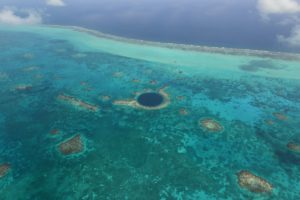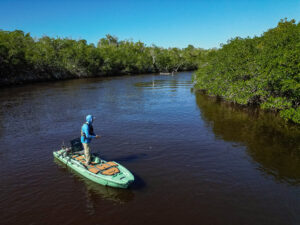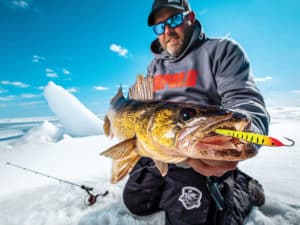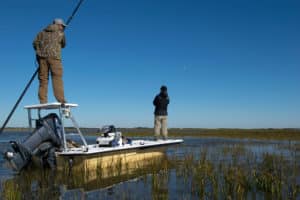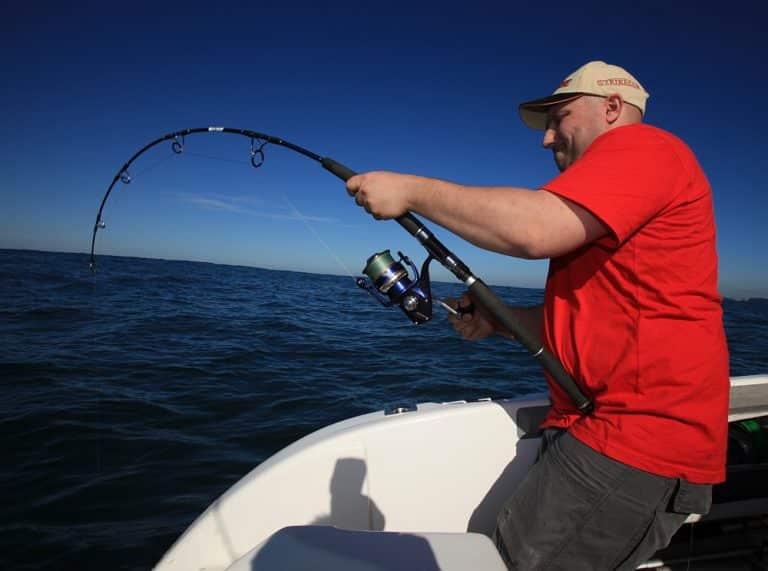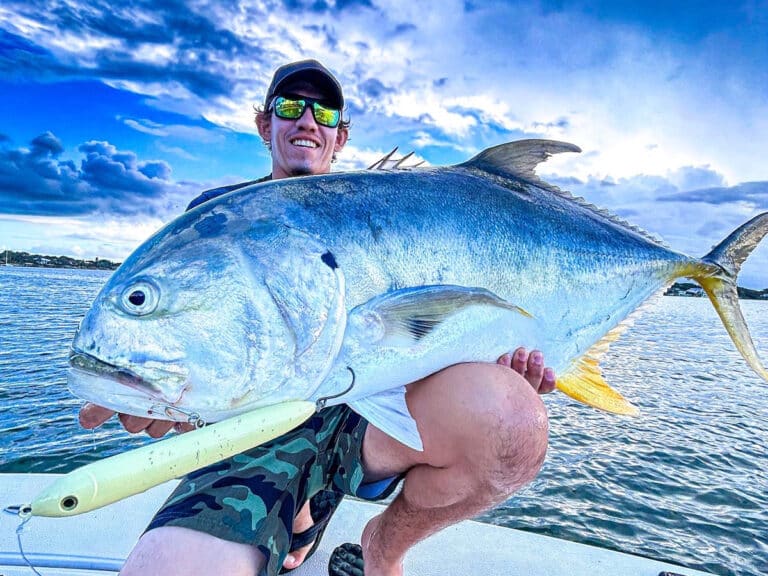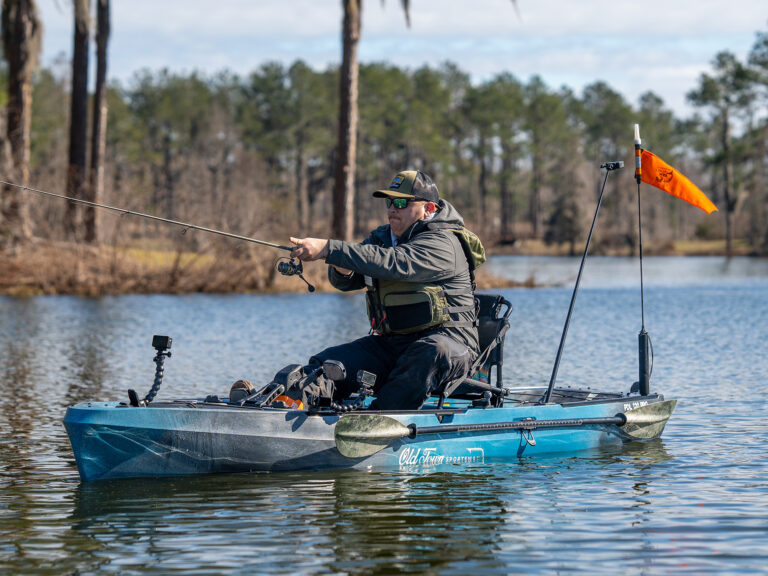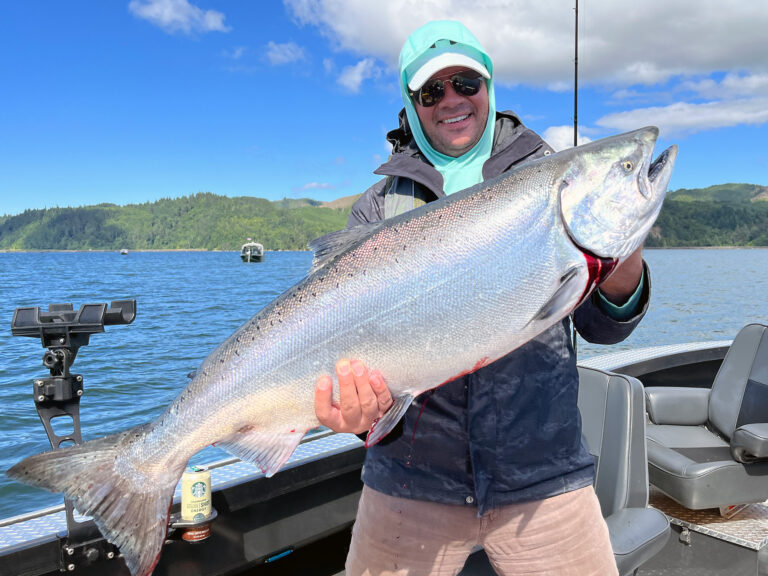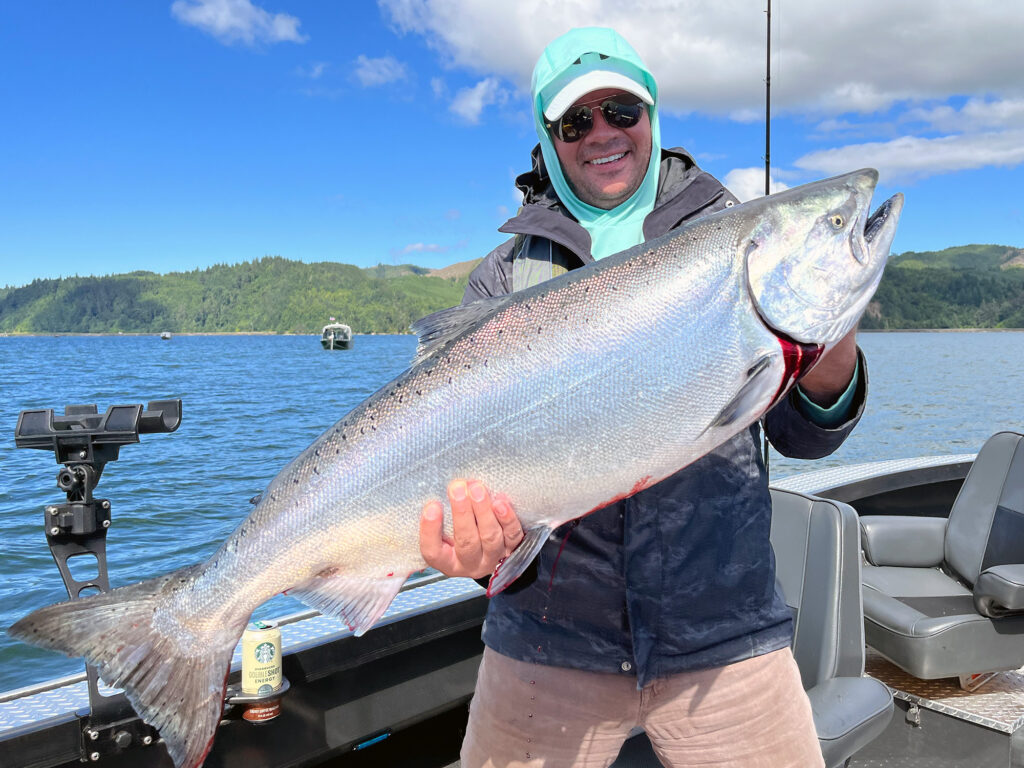
Capt. Hugh Harris, of True North Outdoors in Portland, tells me a chinook salmon can smell one drop of its ancestral stream in 50 gallons of water. In Harris’ home waters of the Columbia River, chinook might get that scent as they ride tides between the ocean and the river early in the season. By summer, many fish stage in the ocean near the Columbia River’s mouth before surging upriver past Buoy 10. In summer’s warming river waters, they find respite in cold-water sanctuaries. Late summer rains bring the scent of their home waters into the river’s flow, drawing salmon to their spawning grounds upstream. Through the seasons, Capt. Harris targets chinook and coho as they move from nearshore waters off the beach to the fast currents near Buoy 10 and those cold-water refuges upstream.
Kayak Fishing for Salmon off Oregon Beaches
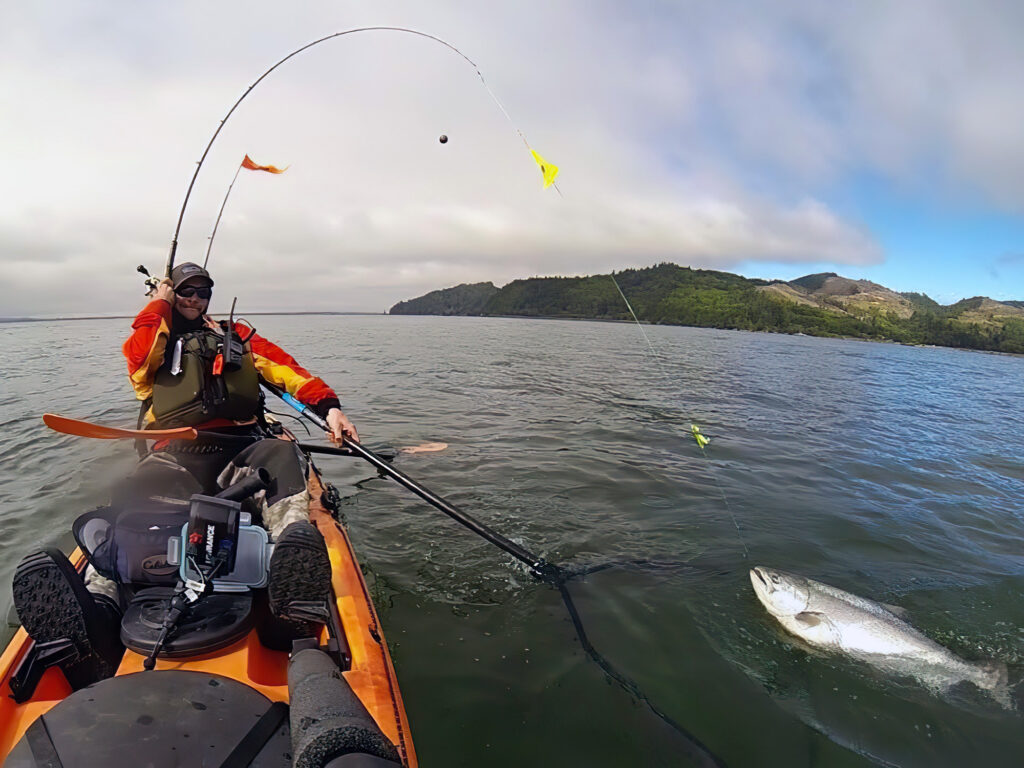
A seasoned kayaker before his days charter fishing, Capt. Harris’ top beaches for kayak fishing along the coast are:
- Pacific City (north coast)
- Depoe Bay (central coast)
- Seaside (north coast)
- Social Security Beach (mouth of the Columbia River, north coast)
- Long Beach, Washington (south coast WA)
- Sunset Bay (southern Oregon)
“Ocean salmon off the Oregon Coast feed aggressively. They’ll bite a variety of offerings if presented correctly,” Harris says. “When I’m heading off the beach, I’ll look for temperature changes, temperatures around 50 to 55 degrees F, salinity changes, and currents that corral schools of prey fish for the predators. Rips, slicks, changes in water surface texture, and actively feeding birds will get my heart racing.”
A properly cured or partially frozen anchovy or herring for bait with a tight spin “is money,” Harris says. He wants the bait’s scales intact and the bait firm, so that its action looks like an injured bait. An anchovy or herring helmet will help a bait last longer without “blowing out,” and losing its perfect roll, especially at faster trolling speeds or currents.
“My second go-to rig is a hoochie spinner with a small chunk of bait (herring, sardine, or anchovy) on the hooks. Place a dodger or flasher 24 to 40 inches above the bait to attract fish’s attention and even give the bait some action.” In addition to salmon, kayak fishermen off Oregon’s coast target Dungeness crab, halibut, greenling, flounder, cabezon, sablefish, ling cod, and rockfish, among others.
Never underestimate the dangers of kayaking in a cold ocean. Even with extensive safety equipment, knowledge, and necessary precautions, Harris has hit a few storms miles offshore that had him riding the swells. Though he still kayaks, starting a family years ago and having children shifted his focus to sharing his time on the water with friends, family, and clients on his boat, a 26-foot aluminum River Wild sled, built in Grants Pass, Oregon.
Buoy 10 for Chinook and Coho Salmon
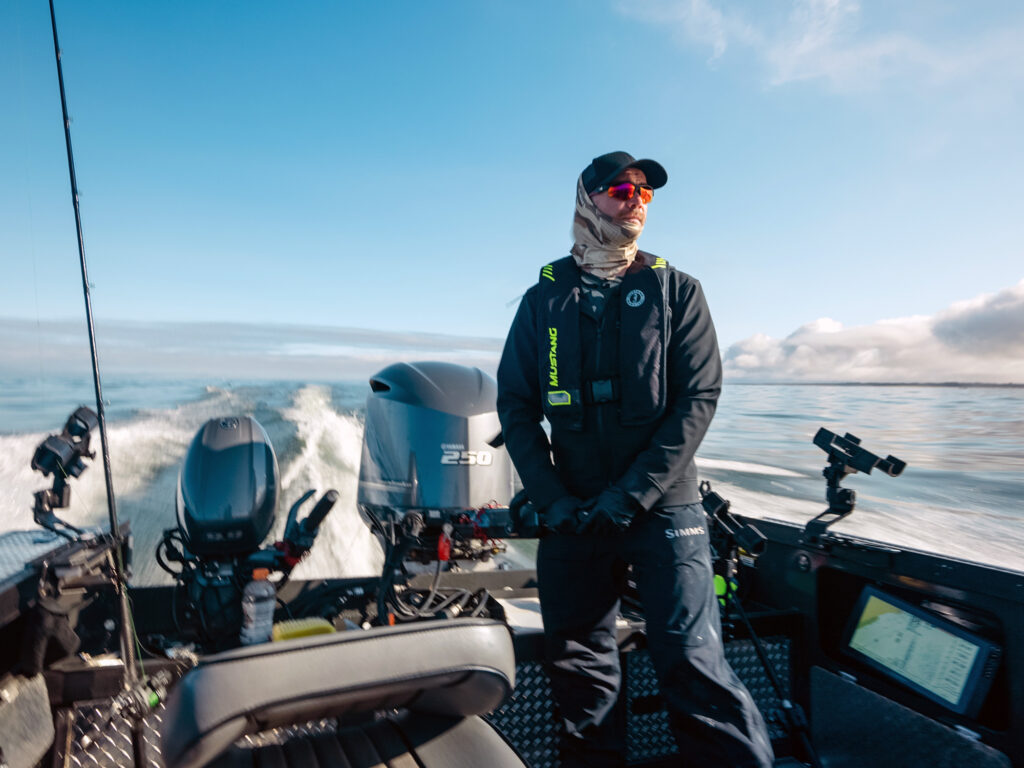
The famous Buoy 10 fishery is a 40-square-mile estuary at the gateway to the Pacific Ocean. Buoy 10 marks the demarcation line for recreational fishing at the mouth of the Columbia River. Beyond it stretches about six miles of jetty for the Columbia River bar, one of the most dangerous waterways in the world.
The Buoy 10 season usually begins around August 1 and lasts into the first week of September, though that depends on state regulations influenced by projected returns of salmon. Chinook salmon make up the majority of the early August returns, with cohos (silvers) coming in later in August and September and salmon fishing lasting into fall. Returns look promising this season, according to fisheries managers. Be sure to double-check local regulations.
“Last year, ocean conditions were good at the start of the season, so I ran across the bar where the majority of the fish were staging,” Capt. Harris said. “You have the option to do that under good conditions. You can be out there for an hour and limit the whole boat, it’s that good. You have a lot of opportunities at Buoy 10.”
The Buoy 10 area can be difficult to navigate with its strong tides over shallow river bottom. Rapidly changing currents and tides, coupled with crowds of trolling boats, lead to actively changing conditions.
“When a boat captain is familiar with the tidal influences of the river’s anatomy, avoids the crowds of boats, and understands the dangers of hydrokinetics over a shallow mass of water,” Hugh says, “they may avoid the inherent dangers of this fishery. There are fish to be caught everywhere throughout the system and avoiding the pack mentality can pay off with safety and success.”
Harris uses Talon Rods, handmade in Woodland, Washington. He likes a 9- to 10-foot, 6-inch rod rated for a 10- to 40-pound test line with parabolic action, a forgiving tip and strong backbone to set the hook and withstand heavy trolling weights. For reels, he uses Okuma Coldwater SS Low Profile Line Counters and Daiwa Lexa 300 Line Counters. He’ll spool 60-pound braid for mainline and 40- to 50-pound Maxima Ultragreen mono for leaders.
Fishing Techniques for the Columbia River Tide
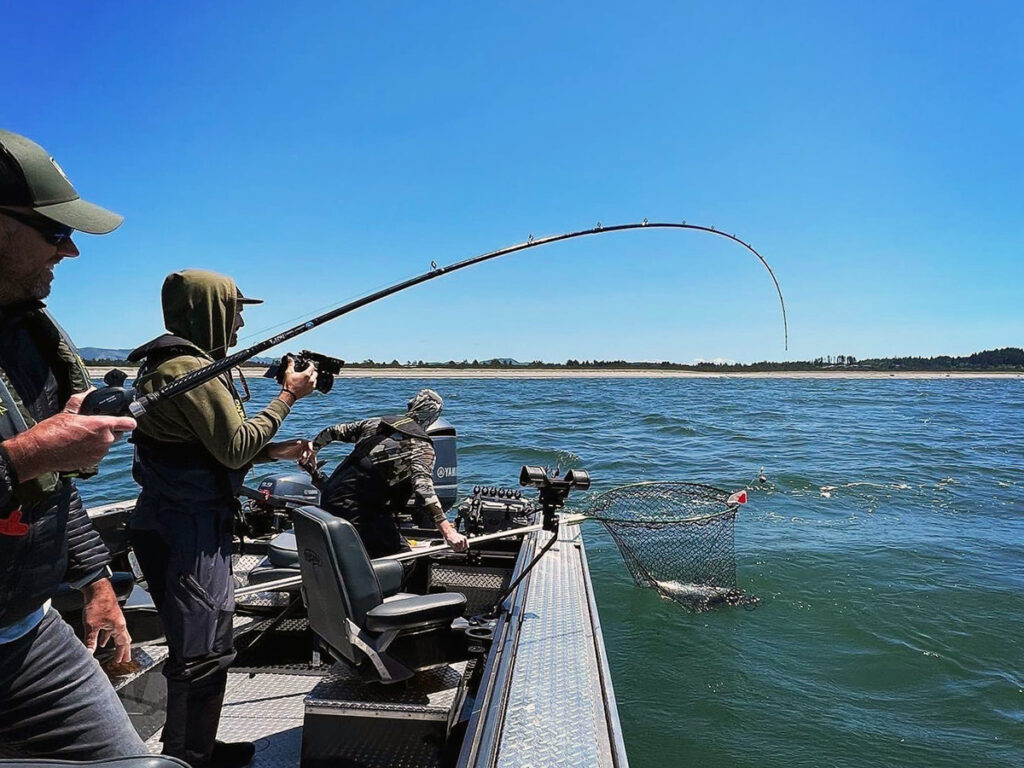
“The aspect that makes or breaks Buoy 10 is understanding where the fish hold on the tidal flow,” Harris says. “Thousands of fish are rolling through there, but you have to understand the tide and current, not only for safety’s sake but to get your gear in front of the fish.
“Around high slack tide we can target fish suspended or just off the bottom by mooching bait while drifting at the speed of the current. The fisherman provides the tight spinning action by short lifting and dropping the tip of the rod. This is an active method of fishing that’s exciting when you set the hook on a big one.”
In another method, the angler presents the terminal gear just off the bottom during a fast ebb on days with severe tide exchanges. During a strong outgoing ebb, Harris says, the boat and presentation will be moving way too fast at 4 to 5 mph speed over ground.
“Boat maneuverability is key because you need to move at the slowest speed possible to keep your gear on bottom while still working. The warm fresh river water will be ebbing with the boat at a fast pace, while the colder, dense saltwater will be slower moving at 20 feet down. Initially, the angler’s line will drop straight down and tangle as it’s being pushed with the outgoing fresh water. If deployed painstakingly slowly at 1 foot per second or less, the line will eventually begin to angle out away from the boat as it reaches the cooler ocean water below. The captain positions the boat perpendicular to the current to slow down the drift and match the current’s speed. Fishermen position their rods on the upstream side of the boat, finding the bottom and reeling up once. The captain maintains the position of the boat to match the speed of the current. This method is extremely effective when the trolling speed cannot be maintained at less than 3.5 mph SOG (Speed Over Ground) even with the trolling motor in idle.”
It’s that kind of careful approach that takes fish in big water.
Summertime at the Columbia River
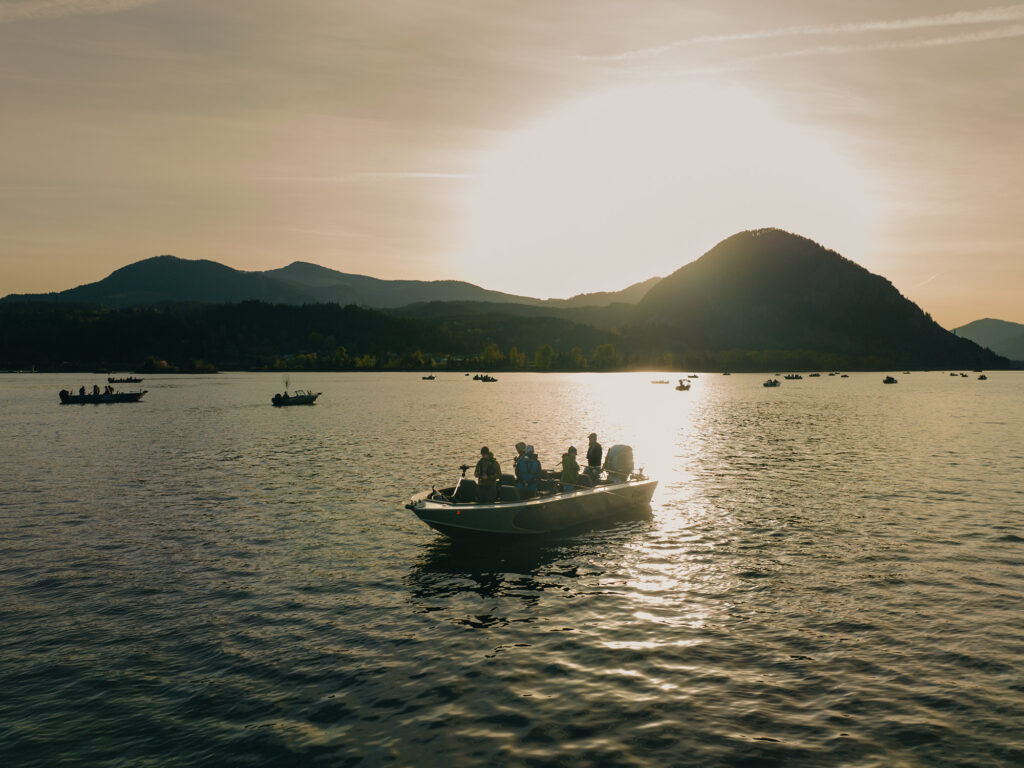
It’s about a two-hour drive from Portland’s airport (PDX) to the Lower Columbia River area. Harris moors his boat in Warrenton. Other towns near the mouth of the Columbia include Astoria and Hammond and on the Washington state side, Ilwaco and Chinook. It’s a rich, wonderful scene in summer with seafood, fresh produce, ample sunshine, and plenty of places to visit off the water. Plan and reserve lodging in advance as vacancies are limited during the fishing season.
Astoria has a vibrant nautical history. There are state parks like Fort Stevens and Fort Canby nearby and other scenic spots. The Peter Iredale shipwreck is at Sunset Beach, Oregon. Ilwaco is a bustling commercial fishing marina at the gateway to the Pacific Ocean, with plenty of fresh seafood available.
Harris suggests a hike up the stairs of the Astoria Column, “to review the history of the area with an amazing view of the Columbia River estuary. There are local breweries, like Fort George Brewery and Buoy Brewery, and great restaurants and shops. The Maritime Museum is very interesting and highlights the history of the Coast Guard and mariners in the region. All told, it’s the best of our Pacific Northwest fishing culture.”


